- 翰林提供学术活动、国际课程、科研项目一站式留学背景提升服务!
- 400 888 0080
A-Level 经济学案 | Market Equilibrium
Demand and Supply
The price mechanism refers to how supply and demand interact to set the market price and the amount of goods sold.
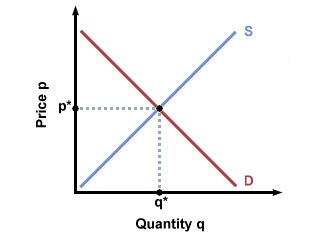
Market equilibrium occurs when supply = demand and there is no tendency for the price to change.
Excess Demand
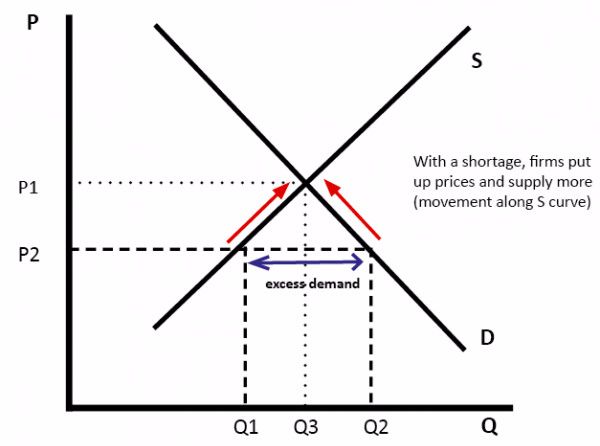
If the price is below equilibrium (P2), demand is greater than supply (Q2 – Q1) – causing a shortage.
- Therefore, with consumers wanting to buy more firms will put up prices and supply more.
- As price rises, there will be movement along the demand curve and less will be demanded.
- Prices will rise until supply equals demand.
Excess Supply
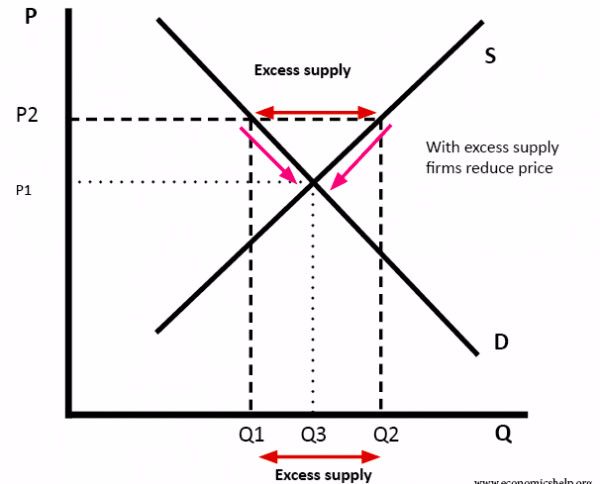
- If the price is above equilibrium (P2), supply is greater than demand (Q2 - Q1) – causing a surplus.
- To sell the unsold goods, firms reduce the price and reduce supply (movement along supply curve). The lower price also encourages more demand.
- The price falls to P1 where supply equals demand.
Impact of Increase in Demand
If consumers saw an increase in income, we would see an increase in demand for goods like TV’s; the demand curve would shift to the right.
Initially there would be a shortage, but the higher demand would cause the price to rise and suppliers to supply more.
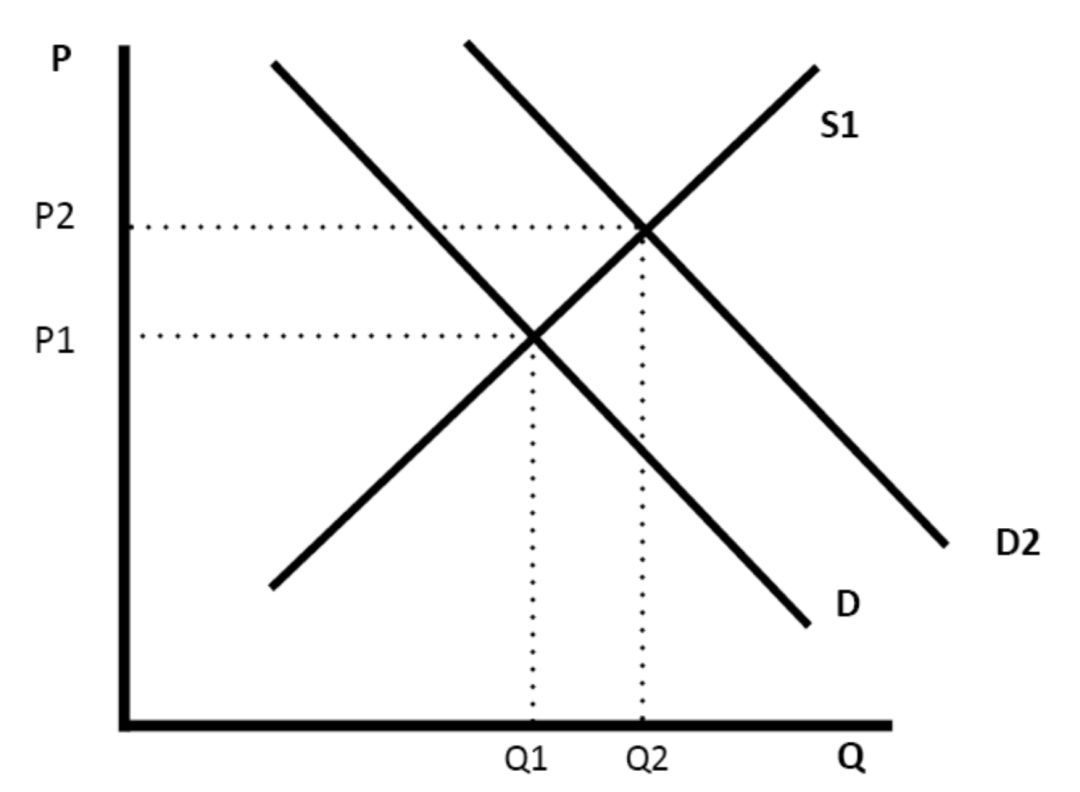
The increase in demand causes an increase in price (P1 to P2) and an increase in quantity (Q1 to Q2).
In the long-term, the higher prices may encourage more firms to enter the market and the supply curve will shift to the right.
This is why growing demand for a product (e.g. mobile phones) could be consistent with falling prices.
Fall in Supply
If the availability of oil decreased, we would see a fall in supply.
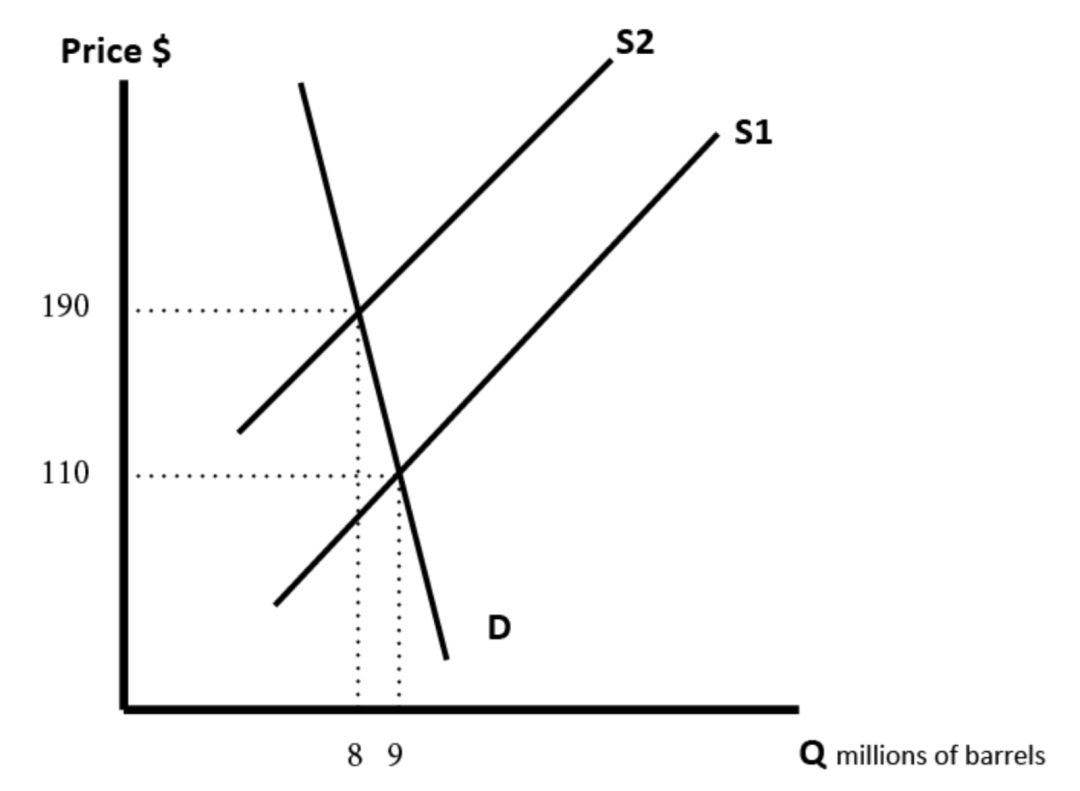
The fall in the supply of oil causes the price to rise and a small fall in demand. Since demand for oil is inelastic, we see a relatively bigger increase in the price.
Impact of Fall in Supply in Long Term
- If the price of oil increased, it may start to make it profitable to produce oil from new places, such as Alaska and Antarctic. Previously it was too costly to produce oil from here, but the higher price may make it worthwhile.
- If the price of oil rises, in the long-‐term people may respond to higher prices by switching to other forms of transport which don’t use petrol.
- In other words, higher prices act as a signal and this can affect the market in the long-‐term.
Factors that Could Explain a Fall in the Price of a Good
The price of a good, such as coffee, would decrease if there was a fall in demand and/or an increase in supply.
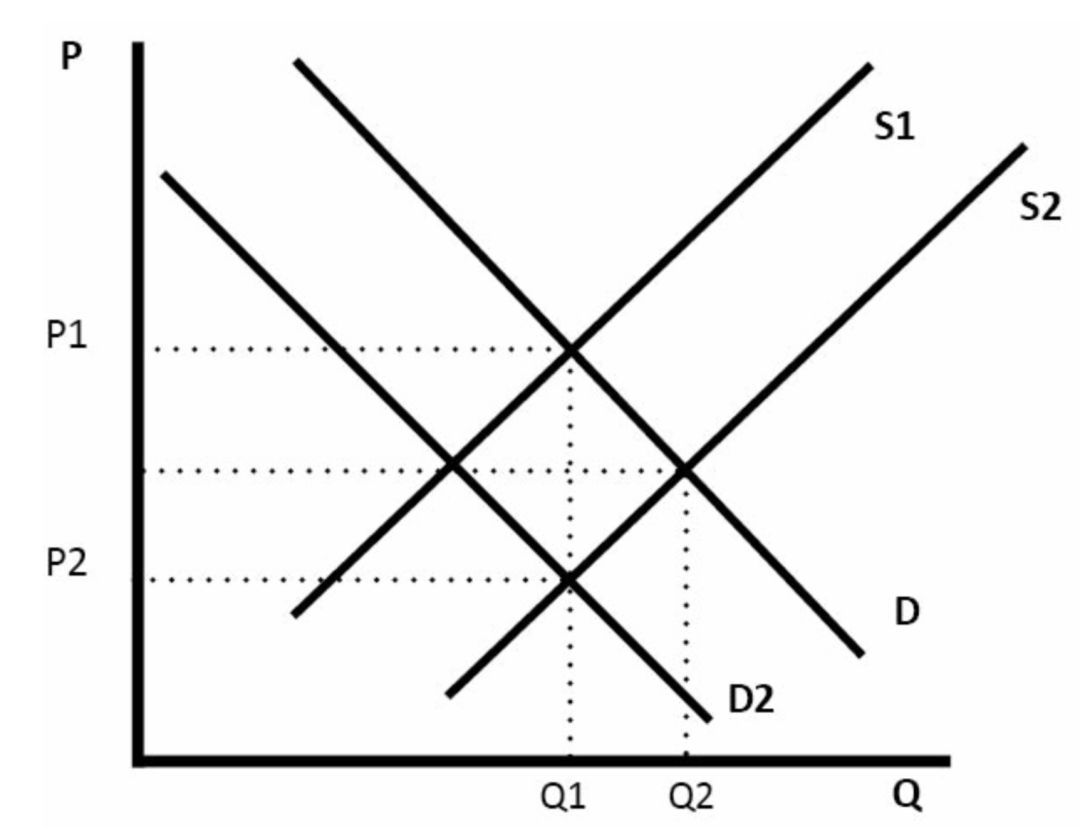
Fall in the price from P1 to P2
The demand for coffee could fall for various reasons such as:
- Lower incomes mean that consumers cannot afford to buy as much.
- Coffee becomes less fashionable. A fall in number of coffee shops.
- Health concerns about caffeine.
The supply of coffee could increase for various reasons such as:
- An increase in the number of suppliers or countries producing coffee.
- Lower costs of production, e.g. lower wage rates in coffee-‐producing countries.
- Government subsidies, e.g. Latin American countries may wish to subsidies the coffee farmers.
- Higher labour productivity in producing coffee, which will decrease the costs of production.
How Eesources are Allocated in a Free Market
In a free market, prices and profit act as signals to agents. This influences the allocation of resources.
1. Rationing effect
- If there is a shortage of the good, the price will tend to increase.
- The higher price causes movement along the demand curve. Less goods are demanded at the higher price. This helps to ration the scarce demand.
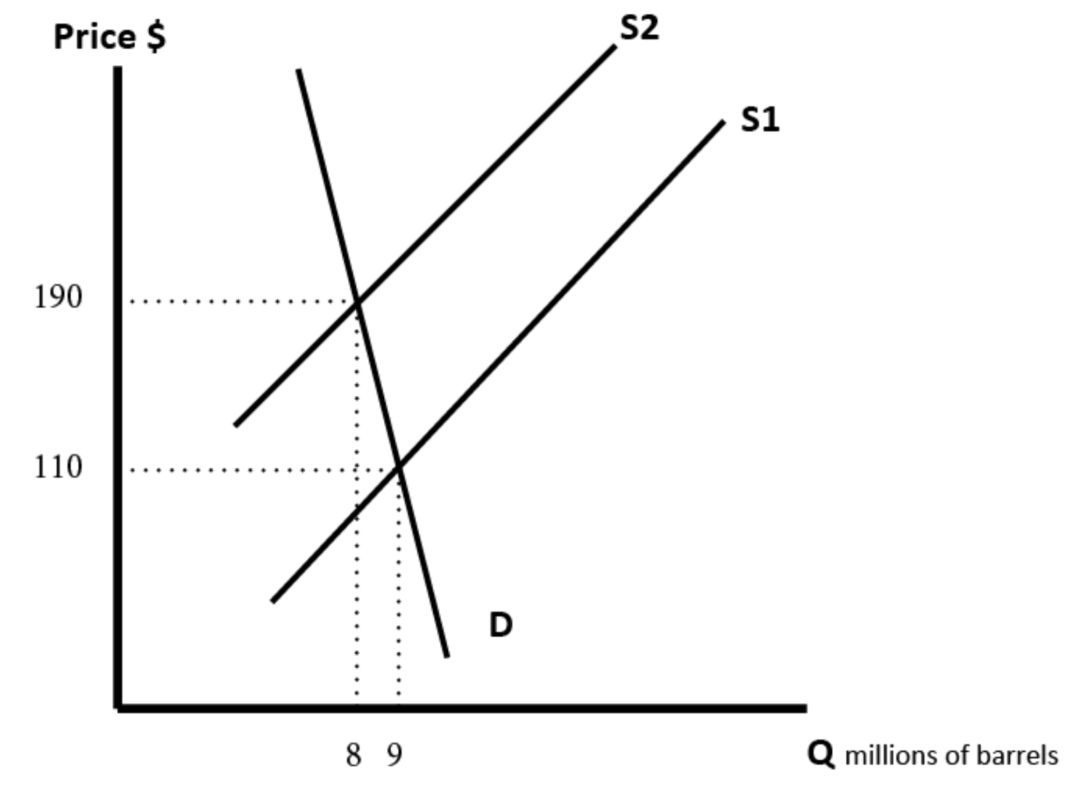
Higher price acts as a disincentive to buy, rationing demand.
2. Incentive effect
- If there was increased demand for a new good (like phone apps), this would push up the price.
- This higher price makes the good more profitable. Therefore, in the long run, it acts as an incentive for producers to increase production.
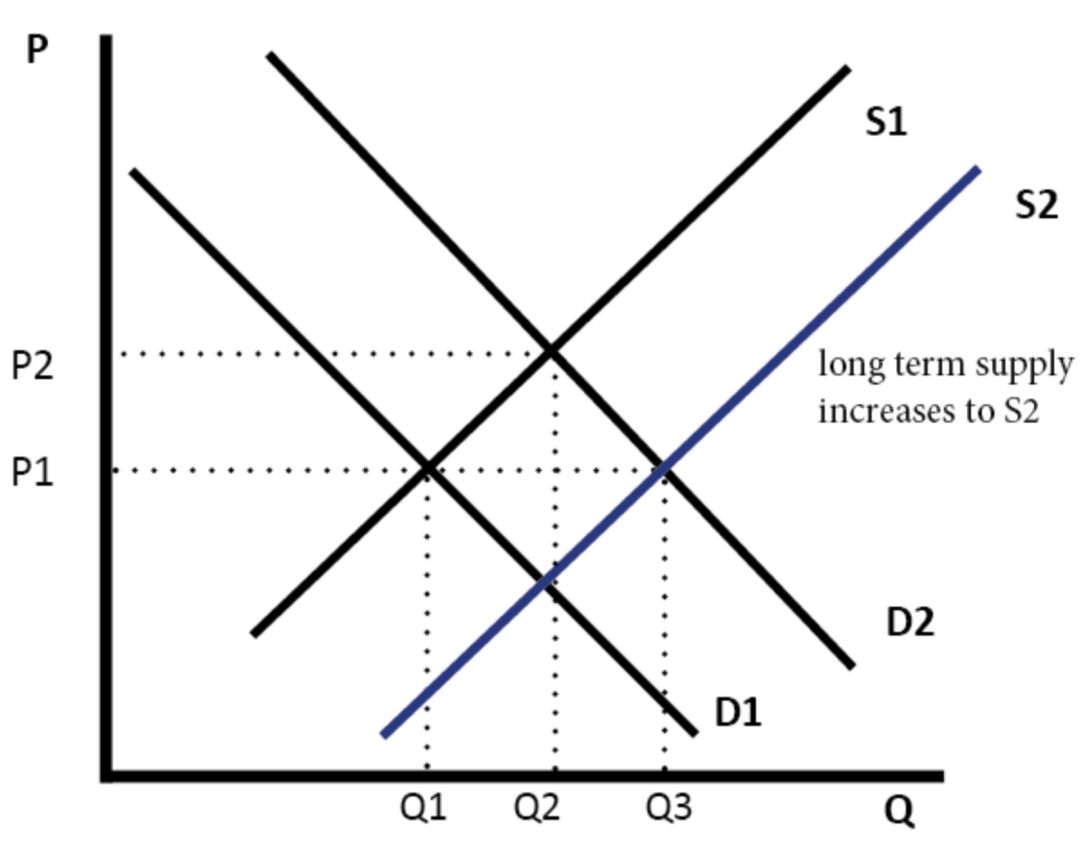
- In the long term, firms respond to higher prices (and more profit) by increasing supply.
- This is an example of how markets can respond to changing conditions.
- For example, the rising demand for mobile phones has led to significant increase in supply.
3. Signalling
The price mechanism can provide a signal to firms and consumers.
- If we see higher demand, prices will rise and this creates a signal to producers that there is high demand.
- A high wage for certain types of work can signal to workers that firms need to fill these jobs.
Interrelated Markets
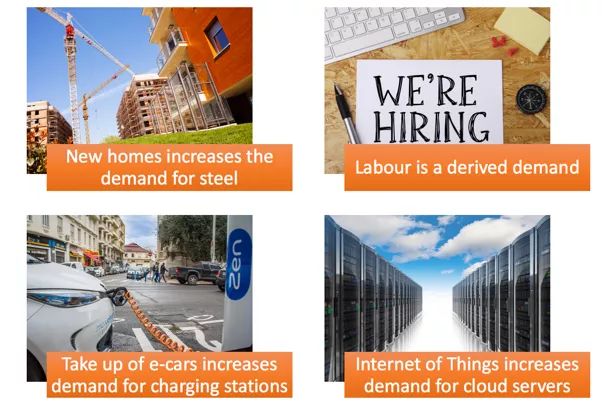
Derived demand. This occurs when the demand for a good depends on demand for another product / service.
- For example, the demand for trains depends on the demand for getting to work. If there was a rise in unemployment and less people working, demand for travel would fall.
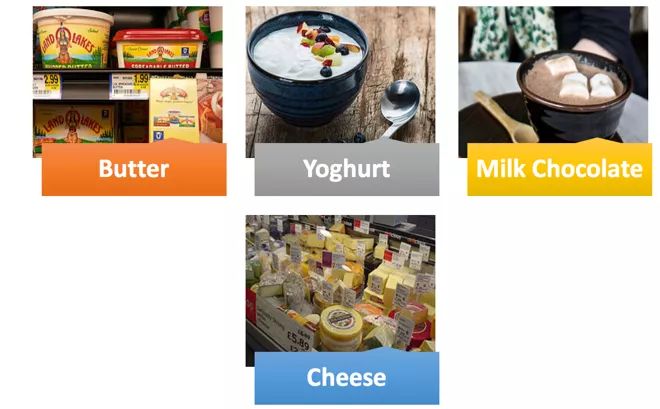
Composite demand. This occurs when a good has multiple different uses. Rising demand for one use rations the availability for use of any other purpose.
- For example, demand for wheat could be due to the use of wheat in either bread or as a biofuel.
- If there is higher demand to use wheat as a biofuel, this will affect the price of bread. With more demand for biofuels, the price of wheat will rise causing the price of wheat for bread to also increase.
- Other examples of composite demand include: Land - used for either offices or for building houses. Steel - could be used for building guns or it could be used for building bicycles.
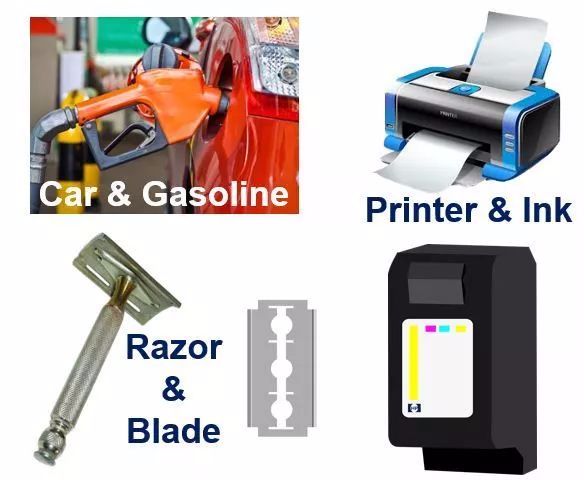
Joint demand. This occurs when two goods are complementary and needed together.
- For example, if you buy a printer, you need to buy printing ink too.
- Therefore, higher demand for home printers will lead to higher demand for ink cartridges. Other examples of joint demand include: iPhone and iPhone Apps, Camera and memory stick.

最新发布
© 2025. All Rights Reserved. 沪ICP备2023009024号-1









